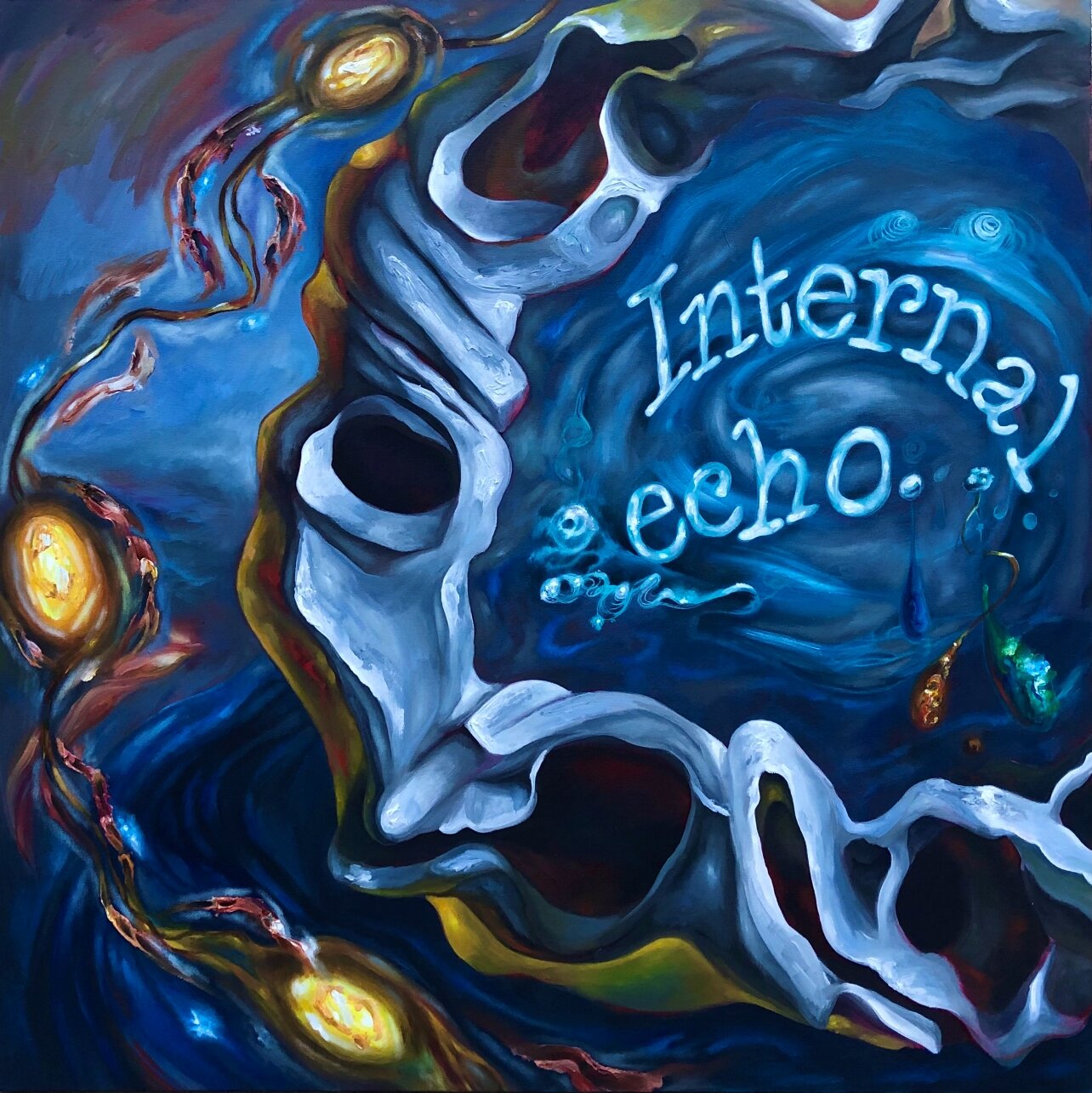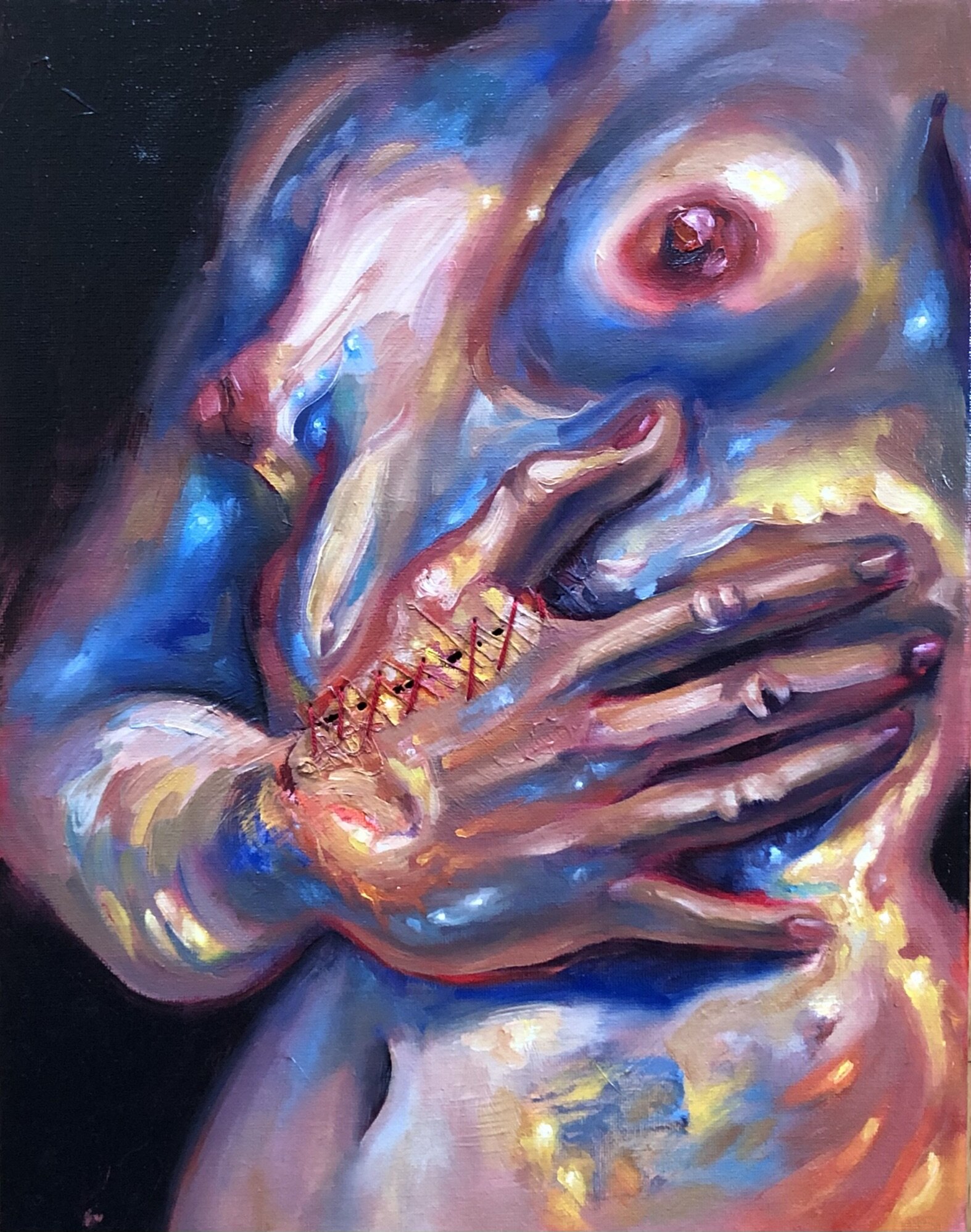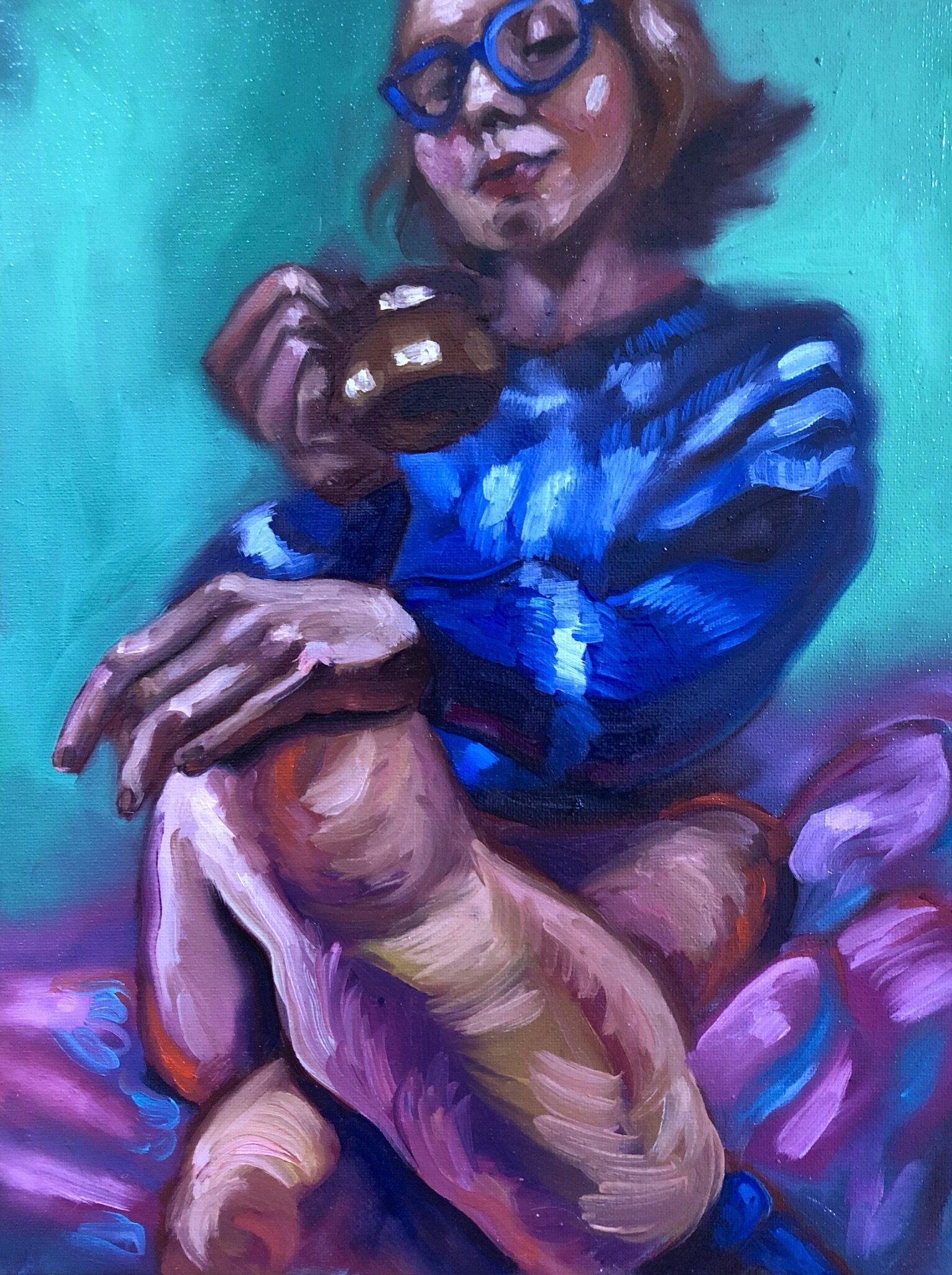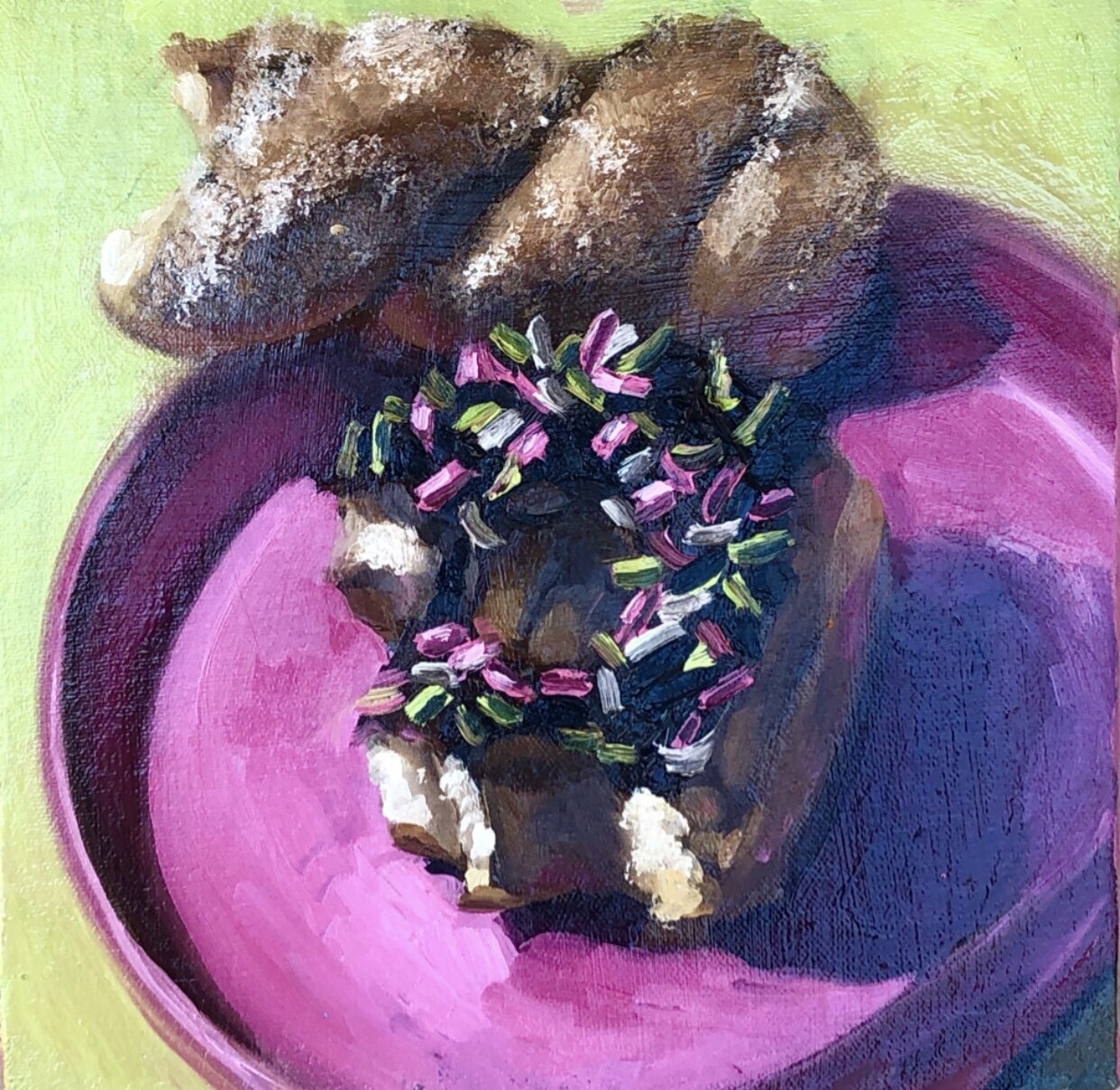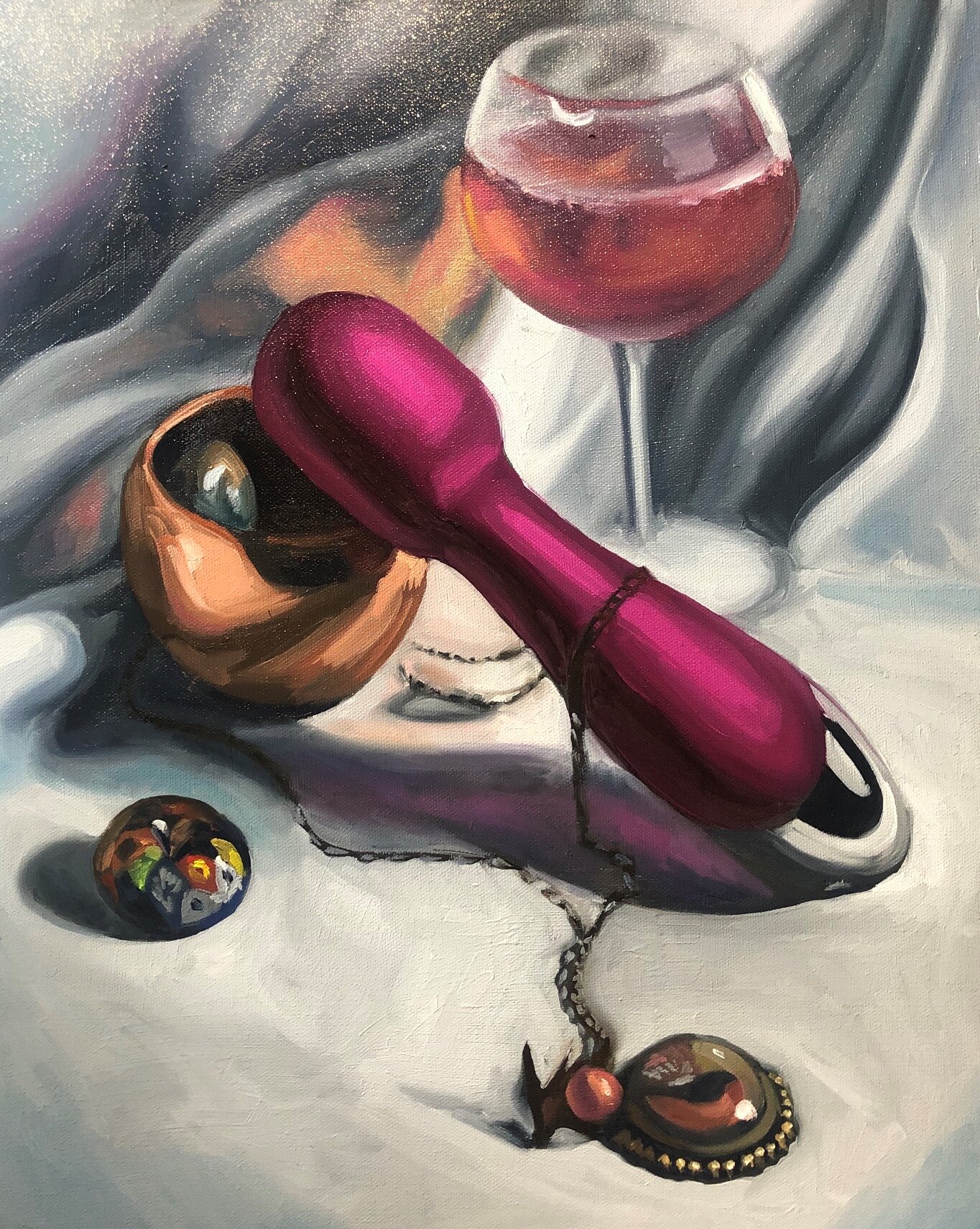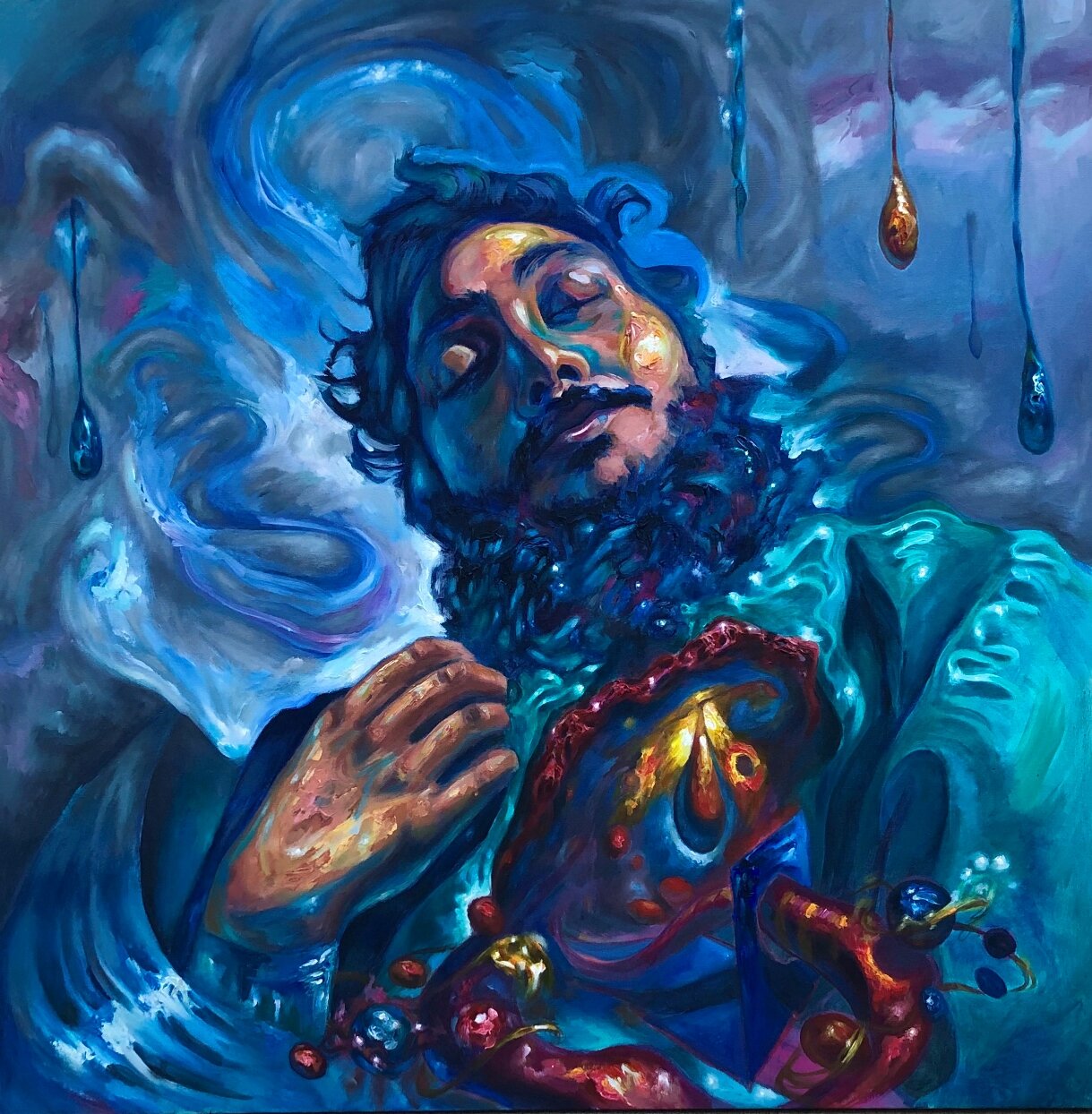CHLOE ALLRED
Hey Chloe, let's start with Los Angeles. How did you wind up living and working in this city?
I moved here about five years ago to go to graduate school at Laguna College of Art and Design. I was moving from Seattle, where I had gone to Cornish College of the Arts. I am a painter, a painter that loves to paint people, a painter that loves to nerd out about art history and technique; Cornish was a very conceptual program and in critiques at times I felt I had to defend that I even wanted to be painting, let alone painting somewhat representationally. There were elements of Cornish I absolutely loved. It is a multidisciplinary art school, and I was surrounded by dancers, musicians, and actors. That was so energizing for me. I love collaborating across art forms. But when it came to the painting program at Cornish, I felt I was having to figure out allot of things on my own. At LCAD the whole faculty was packed with all of these incredible figurative painters, many of whom are now my friends. Which is wild! When I was looking up the school and seeing painters like Sharon Allicotti and F Scott Hess, I was fan-girling so hard. And to now have those artists be a part of my life, as mentors and friends…its surreal in the best way. After graduating from LCAD I wanted to get out of the OC and made my way to LA.
As an art teacher, you must be exposed to so many ideas and styles...how does this (or some other aspect of being around the school) influence your own work?
Yes, definitely. As an instructor, I am really passionate about showing students lots of different techniques, analyzing works and movements from art history, and challenging them conceptually. To teach those techniques I have to be able to do them myself and explain them in multiple ways. Since the pandemic I have been making demo videos where I show the entire process for a painting—I think that has made me both a better teacher and artist. It’s through teaching that I also became so interested in still life! I would set up still lives for my students, think of how I could challenge them to capture different textures and colors. I also started to really think about how the objects you select can tell a story. I first did donut painting demos for my students and totally fell in love with painting decadent desserts, donuts in particular. I also started making spicy still life’s in my own practice, incorporating colorful vibrators—it is so fun to play with a genre and make it your own.
You are an activist in many ways (art, writing, poetry, socially), what was the first thing you can remember getting ACTIVATED about (changing, fighting, raising awareness for), and does this influence your work?
It definitely makes it into my work. The first causes I became really activated about were raising awareness around eating disorders/body image and activism against sexual violence. I created a project called The Body Joy project with my two best friends focused on showing an alternative to the body shame that dominates our culture. I’ve done many collaborations with fellow survivors and activists against sexual violence, and part of my masters work focused on creating disgusting and crusty portraits of perpetrators. I’ve gone to some really dark places with my work. I think the balance I am trying to strike now is still sharing art and writing on the stories and causes I care about, while also working on something that is restorative to me. That calls for making painting of the people I love, and even of making paintings of silly things, as just a celebration of life.
Donuts, Spicy Still Life, and so, so many wonderful self-portraits. What's going on here, Chloe...it seems like you are reclaiming and releasing so much power with your current work. There's a story in here, we know it. Tell?
Oooo! Hahaha. There’s lots of stories. The transformative power of imagination is at the heart of my work. Art-making has helped me to better understand myself, to explore my own stories, and to put my experiences of trauma into a new context. It has helped me to heal. In the space of paper or canvas and with ink, paint, or thread the things that have hurt me become manageable—and in that space I also have the power to transform them, to even exorcise that pain into something beautiful. Sometimes those exorcisms come out a gestural figurative paintings that play with abstraction and color. Sometimes they come out as a playful donut painting or spicy still lives! As someone in recovery from anorexia, I have spent so much of my life and energy obsessing about food, obsessing about what foods I “should” and “shouldn’t” eat. Making myself go through obsessive rituals of counting calories or carbs, taking a small bite and chewing at least twenty times. Through a combination of therapy, art, and writing I have arrived at a much healthier and happier place, a place where I will say “fuck it, eat the donut and enjoy it.” With the spicy still lives, I’m being playful and exploring my sexuality on my terms. Those sex toys are for my pleasure—that is a pleasure centered in an experience of my body and sexuality…To return back to the eating disorder past, I have spent so much time thinking about how my body looks and how others perceive me. And fuck that too. I want to focus on how my body feels—what feels good, what tastes good, what is going to make for a good experience of life.
Imagine your art school approaches you and says, Chloe..new class just for you: any subject, any style anything goes. You have no restrictions. What is the opening paragraph to this course and what three things do you want to be sure to cover in this course.
Oooooo. I think it would be really incredible to do a figurative painting class that dived into different paint applications and the figure, while also walking through different examples of approaches through out art history. From renaissance grisailles and glazes, to Sargent’s wet into wet and blended passages, to Klimt’s subtle flickers of color and lines in the skin, to Albrights super thick and crusty impasto figures. There are so many different ways of applying paint, and those different applications can tell radically different stories.
